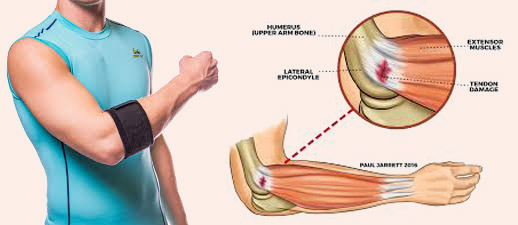-
Mon - Sat
08:00am - 08:00pm

The medical term for tennis elbow is lateral epicondylitis because it affects the outside of the elbow bone called the lateral epicondyle. The cause of the problem is damage to a tendon that joins the extensor muscles of the forearm to the upper arm bone (humerus). This tendon is called the common extensor tendon.

Tendon damage can occur after a single incident, such as lifting something very heavy causing a tear in the tendon. But the most common cause is repeated overuse of the arm.
This overuse causes tiny tears (called micro tears) in the tendon. You will make this worse if you continue doing the activity that triggered the pain and if you don’t rest your arm.
A range of different activities that involve repeated hand, wrist and forearm movements can be the cause. These include:
The main symptom is pain and tenderness on the outside of the elbow and sometimes in the muscles on top of the forearm. Tennis elbow usually affects the arm of your dominant hand (right arm if you are right-handed) because this is the arm you use the most.
The symptoms usually develop gradually. The pain may go away after a day or so. But if you repeat the activity that triggered the pain, it may get worse as you will increase the damage to your tendon. The pain may become constant and pain may even interrupt your sleep.
Other symptoms include:
Exactly how you do this depends on how you came to have tennis elbow and how severe it is.
Treatment for tennis elbow includes the following.
This will help to rest your tendon which has inflamed due to repetitive activity
You may need to change your daily activities to rest your injured area
Apply an ice pack-to reduce the pain and swelling Immerse your arm in Ice for 10 minutes or use
an ice pack (a bag of frozen peas will do) for 10 to 30 minutes Do not apply the ice directly to your
skin because it can cause cold injury place a cloth between the ice your skin. Repeat every couple
of hours as needed for the next 48 hours, allowing your arm to warm up between ice sessions
Take anti-inflammatory medicine
Wear an arm brace – this is a form of strapping that you can wear around your forearm and elbow to
help restrict the movement of your tendon
Modify technique – when doing a manual task you can’t avoid, use a tool with a smaller grip If
available.